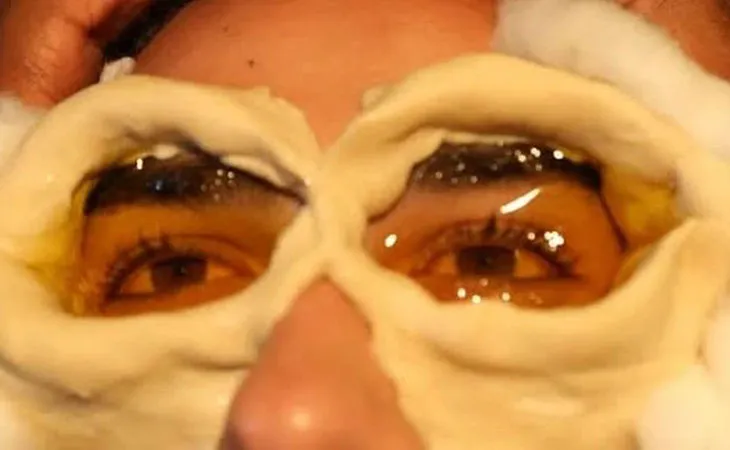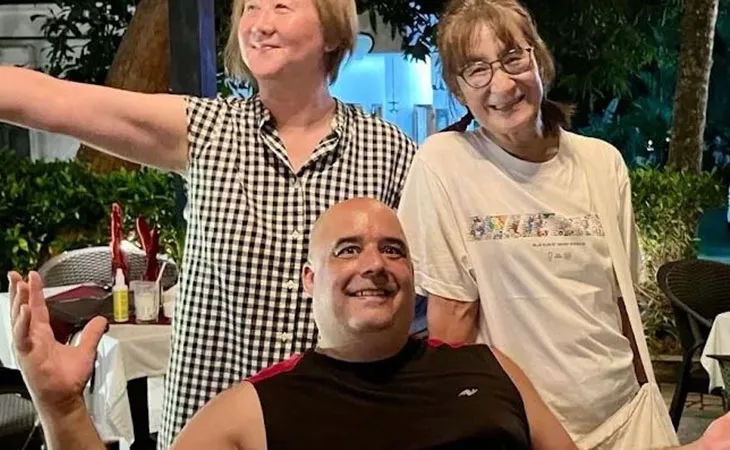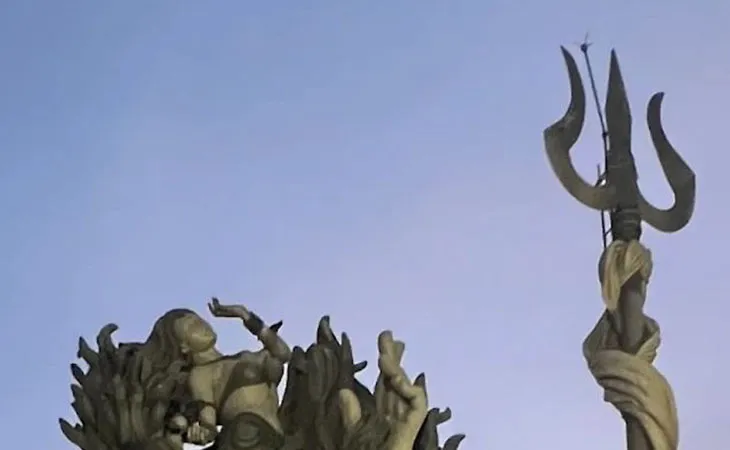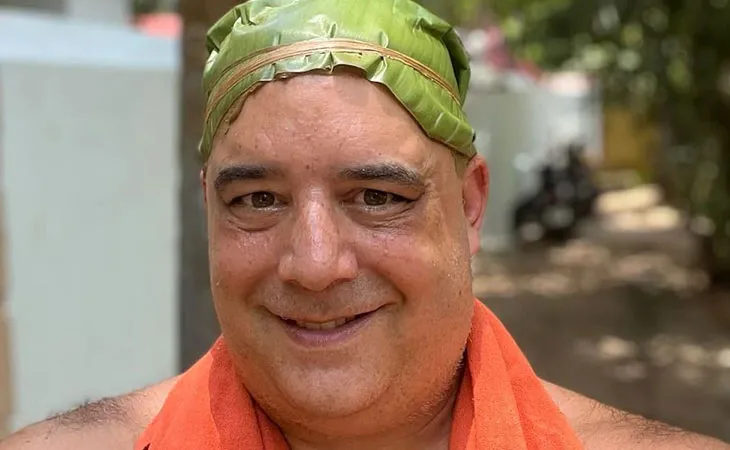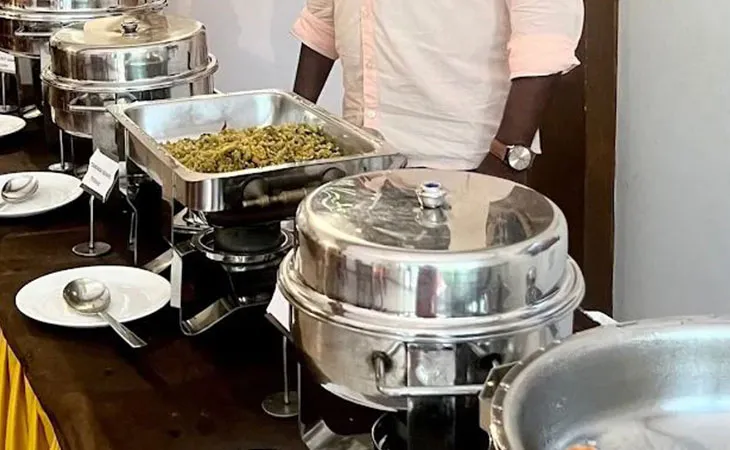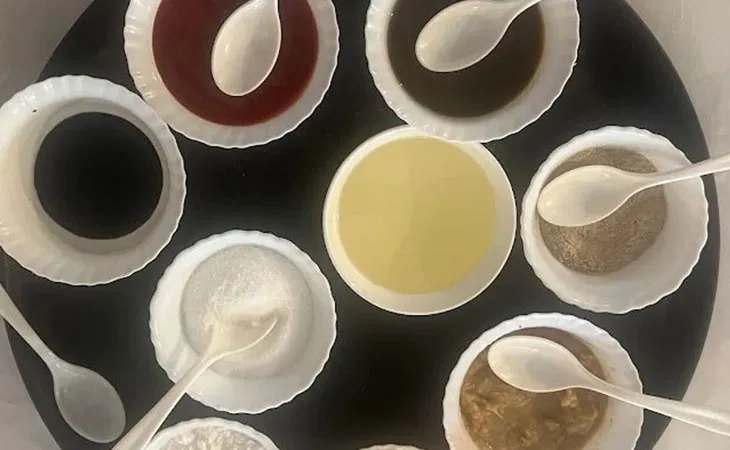Panchakarma treatment in ayurveda is a comprehensive and holistic medical science that focuses on treating illnesses at their root cause rather than just managing the symptoms. It offers a range of treatments to restore balance and promote overall health.
The two main types of treatments in Ayurveda are Shamana Chikitsa and Shodhana Chikitsa, each serving distinct purposes:
According to Ayurvedic principles, Panchakarma treatments effectively eliminate the root cause of the disease, thereby preventing its recurrence. On the other hand, Shamana Chikitsa primarily focuses on symptom management and may not provide permanent relief.
The choice between Shamana and Shodhana Chikitsa depends on the individual's health condition, the severity of the disease, and the practitioner's assessment of the underlying imbalances. In many cases, a combination of both therapies may be recommended to achieve optimal results and prevent the recurrence of health issues. It is essential to consult our qualified Ayurvedic practitioner can tailor the treatment plan based on the individual's unique constitution and specific health needs.
What is Panchakarma in Ayurveda?
Ayurvedic Panchakarma treatment is a holistic and transformative therapeutic approach that forms an essential part of traditional Ayurvedic medicine. It aims to restore the body's natural balance, eliminate toxins, and rejuvenate the mind, body, and spirit. The term "Panchakarma" comprises two words: "Pancha" (meaning five) and "Karma" (meaning actions). As the name suggests, Panchakarma involves a series of five therapeutic procedures designed to detoxify and balance the body's doshas (Vata, Pitta, and Kapha) while promoting overall health and well-being.
The main goal of Panchakarma is to remove accumulated toxins (ama) from the body and restore the natural state of balance, promoting optimal health and well-being. It is believed that imbalances in the doshas lead to various diseases and health issues, and Panchakarma aims to address these imbalances through a series of specialized treatments.Learn more about panchakarma treatment packages.
आयुर्वेद में पंचकर्म क्या है?
पंचकर्म आयुर्वेद की एक बहुत पुरानी और खास इलाज की विधि है। "पंचकर्म" का मतलब है "पांच (पंच) काम (कर्म)"। इसमें शरीर को अंदर से साफ करने और उसे ठीक करने के लिए पांच मुख्य तरीके अपनाए जाते हैं।
जैसे हम घर की सफाई करते हैं, वैसे ही पंचकर्म शरीर के अंदर जमा गंदगी और खराब चीजों को बाहर निकालता है। आयुर्वेद मानता है कि जब हमारे शरीर में वात, पित्त और कफ नाम के तीन मुख्य तत्व बिगड़ जाते हैं, तो बीमारियां होती हैं। पंचकर्म इन तत्वों को फिर से सही करता है और शरीर को स्वस्थ बनाता है।
ये पांच मुख्य तरीके हैं:
- वमन: इसमें कुछ दवाएँ देकर शरीर से उल्टी करवाई जाती है, जिससे कफ दोष बाहर निकलता है। यह फेफड़ों से जुड़ी बीमारियों और कस्थमा जैसी दिक्कतों में मदद करता है।
- विरेचन: इसमें पेट साफ करने वाली दवाएँ दी जाती हैं, जिससे पित्त दोष शरीर से बाहर निकलता है। यह पेट और लिवर की परेशानियों को दूर करने में सहायक होता है।
- बस्ती: यह एक तरह का एनीमा है, जिसमें औषधीय तेल या काढ़ा गुदा मार्ग से शरीर में डाला जाता है। यह वात दोष को ठीक करने और हड्डियों, जोड़ों, और कब्ज जैसी समस्याओं में बहुत फायदेमंद है।
- नस्य: इसमें नाक में कुछ खास दवाएँ डाली जाती हैं। यह सिर और गले से जुड़ी समस्याओं जैसे सिरदर्द, साइनस, और नींद न आने में आराम देता है।
- रक्तमोक्षण: इस तरीके में खराब खून को शरीर से निकाला जाता है। यह त्वचा की बीमारियों और कुछ खास खून से जुड़ी दिक्कतों में इस्तेमाल होता है।
पंचकर्म शरीर को जवान बनाए रखने, बीमारियों से लड़ने की ताकत बढ़ाने और दिमाग को शांत रखने में भी मदद करता है। यह एक बहुत गहरा उपचार है, जिसे किसी अनुभवी आयुर्वेदिक डॉक्टर की देखरेख में ही करवाना चाहिए।
The main goal of Panchakarma is to remove accumulated toxins (ama) from the body and restore the natural state of balance, promoting optimal health and well-being. It is believed that imbalances in the doshas lead to various diseases and health issues, and Panchakarma aims to address these imbalances through a series of specialized treatments.
→Go to More Reviews
The Process of Panchakarma Therapy
The Panchakarma therapy process consists of three stages: Purvakarma, Pradhana Karma, and Paschat Karma.
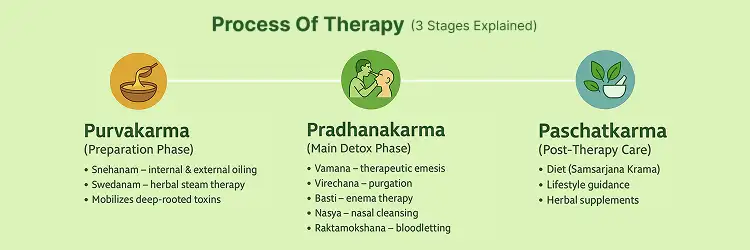
Stage 1: Purvakarma
Purvakarma is the preparatory phase that precedes the main purification procedures of Panchakarma. This stage involves three important pre-purification measures:
- Deepana-Pachana: This step involves the oral administration of digestive herbs to enhance Agni (the digestive fire) and liquefy the accumulated toxins, making them easier to eliminate from the body.
- Snehana (Internal and External Oleation): Snehana includes two types of oleation—internal and external. In internal oleation, medicated ghee is ingested in gradually increasing doses for a period of 3 to 7 days. The selection and dosage of the medicated ghee depend on the specific health condition and the individual's constitution. External oleation involves body massage using specific herbal oils, either for the entire body or targeted areas. This process helps toxins move towards the gastrointestinal tract, softens the superficial and deep tissues, and nourishes the nervous system.
- Swedana (Herbal Steam Therapy): Swedana is the induction of sweat through steam therapy. The person sits in a steam chamber filled with herbal decoctions. This process helps to detach toxins from the tissues and expel them through the sweat pores on the skin.
The oils used for Snehana are carefully chosen based on the individual's condition, and commonly used oils include Dhanwantharam Thailam and Sahacharadi Thailam.
By completing the Purvakarma stage, the body becomes prepared for the main purification procedures, optimizing the effectiveness of Panchakarma therapy in eliminating accumulated toxins and restoring balance and well-being.
Stage 2: Pradhana Karma - The Main 5 Panchakarma Therapies
The Pradhana Karma stage of Panchakarma involves the main five purification techniques, each designed to address specific doshic imbalances and treat various health conditions. Let's explore these therapies:
- Vamana: Vamana therapy is effective in treating Kapha dominant diseases. It involves the administration of herbal medicines to induce controlled vomiting, facilitating the elimination of toxins through the mouth. Vamana is beneficial for conditions such as chronic asthma, diabetes, chronic cough and cold, allergies, skin diseases, and chronic indigestion.
- Virechana: Virechana therapy primarily targets Pitta disorders but also addresses imbalances of Kapha and Vata doshas. It involves the use of purgative substances to induce controlled loose motions, aiding in the purification process by expelling toxins from the body. Virechana is useful for conditions like chronic fever, diabetes, skin disorders (e.g., Vitiligo and Psoriasis), neurological diseases (e.g., Paraplegia, Hemiplegia, and paralysis), joint disorders, digestive issues, and headaches.
Anuvasana Vasti: Enema using medicated oils.
Anuvasana Vasti: Enema using herbal decoctions.
Note: Vasti is beneficial for degenerative diseases, ankylosing spondylitis, lumbar spondylitis, skin diseases, osteoporosis, sciatica, and various digestive disorders.
- Nasya: Nasya involves the administration of medicated oils or herbal preparations through the nose. This procedure is helpful for various conditions such as improving eyesight, treating ear, nose, and throat diseases, enhancing memory, addressing trigeminal neuralgia, Bell's palsy, headaches, migraines, nasal polyps, breathing problems, hair fall, and premature hair greying.
- Raktamokshana: Raktamokshana is the process of removing impure blood from the body. It can be achieved using leech therapy or direct venipuncture. This therapy is beneficial for conditions like skin diseases (e.g., acne, urticaria, psoriasis, and eczema), non-healing wounds, pain management, sciatica, elephantiasis, varicose veins, and arthritis.
Each of these Panchakarma processes is tailored to address specific imbalances and conditions in the body. Properly performed under the guidance of an experienced Ayurvedic practitioner, Panchakarma therapies offer significant health benefits by eliminating toxins, restoring doshic balance, and promoting overall well-being.
Stage 3: Paschat Karma
Paschat Karma is the post-purification phase of Panchakarma, aimed at restoring the body's equilibrium and rejuvenating the system. It involves specific diet and lifestyle management, along with the administration of rejuvenating medicines and herbal preparations. This stage comprises the following components
- Sansarjan Karma: Sansarjan Karma is a gradual diet protocol designed to transition the individual's diet from liquids to semi-solids and eventually to a normal diet. This step ensures that the digestive power (Agni) is restored to its optimal level, allowing the body to assimilate nutrients effectively.
- Rasayan: Rasayan refers to the administration of rejuvenating medicines and herbal formulations. These medicines help in the physical restoration of the body, enhance vitality, and promote overall well-being.
- Shaman Chikitsa: After the main Panchakarma therapies, Shaman Chikitsa involves the addition of appropriate Ayurvedic medicines to further alleviate disease symptoms, if any remain. These medicines support the body's healing process and aid in maintaining balance.
Who Can Undergo Panchakarma?
Panchakarma is suitable for all adults between the ages of 18 and 70 years. However, it is essential to undergo Panchakarma under the guidance of a qualified Ayurvedic practitioner who can tailor the treatment plan according to an individual's specific health needs and constitution.
How Often Should We Go for Panchakarma Treatment?
Panchakarma is typically recommended during the change of seasons. It is beneficial to undergo 2-3 complete Panchakarma sessions in a year to maintain overall health and prevent the accumulation of toxins.
How to Know Which Panchakarma Procedure is Useful for a Patient?
The selection of the appropriate Panchakarma procedure depends on several factors;
- Including Age
- Body Structure
- Dietary Habits
- Living Environment
including age, body structure, dietary habits, living environment, weather, dosha status of the body, type of illness, and the medications the individual is taking. A qualified Ayurvedic doctor will assess these factors and determine the most suitable purification technique for each patient. Customizing the treatment ensures optimal results and a personalized approach to address individual health concerns effectively.
Other Popular Ayurvedic Kerala Panchakarma Techniques
Ayurvedic Kerala Panchakarma is a holistic healing system that incorporates various therapeutic techniques to promote overall health and well-being. In addition to the traditional Panchakarma procedures, several other popular Ayurvedic treatments are commonly practiced in Kerala, India. These techniques target specific health issues and provide unique benefits. Let's explore some of the other popular Ayurvedic Kerala Panchakarma techniques:
- Udwarthana: Udwarthana involves massaging the body with herbal powders that are specially selected based on the individual's dosha constitution. This treatment helps in weight loss , detoxification, improving blood circulation, and enhancing skin health.
- Shirodhara: Shirodhara is a deeply relaxing therapy where warm herbal oils are poured in a continuous stream onto the forehead, specifically over the "third eye" area. It is effective in managing stress, anxiety, insomnia, and improving memory and concentration.
- Shiropichu: Shiropichu involves placing oil-soaked cotton pads over the head, particularly on the scalp. This treatment is beneficial for various scalp and hair-related issues, as it nourishes the hair roots and promotes healthy hair growth.
- Shirovasti: Shirovasti is a therapeutic procedure where a cap made of leather or cloth is fitted securely on the head, and warm herbal oil is poured into it. This treatment is primarily used to alleviate neurological conditions, migraines , and hair problems.
- Kati Vasti: In Kati Vasti, warm medicated oil is poured and retained on the lower back area using a specially formed dough boundary. It is effective in relieving back pain, sciatica, and muscular spasms in the lumbar region.
- Janu Vasti: Janu Vasti involves retaining warm medicated oil on the knee joints. It is useful for managing knee pain,arthritis, and swelling in the knee region.
- Hridya Vasti: Hridya Vasti is the application of warm herbal oil over the cardiac region. It helps strengthen the heart, improve heart function, and promote overall cardiovascular health.
- Griva Vasti: Griva Vasti targets neck pain and cervical spondylosis. Warm medicated oil is poured and retained over the back of the neck to reduce pain and stiffness.
- Akshitarpan: Akshitarpan involves retaining medicated ghee or oil over the eyes, providing nourishment to the eyes, improving eyesight, and preventing eye disorders like cataracts.
- Potli Sweda: Potli Sweda is a therapeutic massage where small herbal pouches filled with herbal powders or medicinal ingredients are heated and applied over the body. It helps relieve muscle pain, joint stiffness, and promotes relaxation.
- Uttara Vasti: Uttara Vasti is a specialized treatment where medicinal oil or ghee is administered through the urethral or vaginal routes. It is particularly effective in managing infertility issues in both males and females.
- Njavarakizhi (Shashtikashali Pinda Swedam): Njavarakizhi is a rejuvenating massage therapy using a small cloth bag filled with cooked rice mixed with herbal powders. The bag is dipped in warm medicated oil and applied to the body, inducing sweating and providing relief from Vata-related issues, neurological disorders, and joint pain.
- Pizhichil (Thaila Dhara): Pizhichil is a combination of Snehana (oleation) and Swedana (sudation). It involves a rhythmic pouring of warm medicated oil over the body while simultaneously massaging the affected areas. Pizhichil is beneficial in improving blood circulation, reducing stress, and managing neurological problems.
These additional Ayurvedic Kerala Panchakarma techniques complement the traditional Panchakarma procedures and provide a wide range of health benefits. Each treatment is customized based on an individual's unique needs and dosha constitution to promote harmony, balance, and overall well-being. Before undergoing any Ayurvedic treatment, it is essential to consult with our qualified Ayurvedic practitioner to determine the most suitable therapies for your specific health requirements.
General Instructions During Panchakarma Treatment
-
Use Only Warm Water: During Panchakarma, it is recommended to use warm water for drinking and bathing. Warm water helps in cleansing the body and aids in the detoxification process.
- Avoid Sexual Intercourse: It is advisable to avoid sexual intercourse during Panchakarma treatment. This helps conserve energy and promotes better focus on the healing process.
- Avoid Daytime Sleep: Refrain from taking naps during the day as it may disrupt the body's natural rhythm and affect the effectiveness of the treatment.
- Avoid Air-Conditioners: Steer clear of using air-conditioners during Panchakarma. The body needs to maintain its natural temperature to facilitate the purification process.
- Avoid Late-Night Working: Try to avoid late-night working or activities that may disturb your sleep schedule. A proper sleep routine is crucial for the body's healing and rejuvenation.
- Avoid Heavy Food: Stick to a light and easily digestible diet during Panchakarma. Avoid heavy, oily, and processed foods that may hinder the detoxification process.
- Avoid Stress: Minimize stress during the treatment period. Engage in relaxation techniques like meditation, gentle yoga, or walks in nature to promote mental well-being.
- Avoid Heavy Exercise: While some gentle exercises like yoga or walking are beneficial, avoid rigorous and strenuous exercises during Panchakarma.
- Keep Head and Ears Covered: It is advised to cover the head and ears with a cotton cloth to protect them from external elements during the treatment.
Benefits of Panchakarma Therapy
-
Eliminates Toxins: Panchakarma is highly effective in flushing out accumulated toxins from the body, promoting overall detoxification and improved organ function.
- Recharges Body, Mind, and Soul: Panchakarma rejuvenates the entire system, enhancing energy levels, mental clarity, and emotional well-being.
- Balances Tridosha: By addressing imbalances in Vata, Pitta, and Kapha doshas, Panchakarma helps restore harmony and balance within the body.
- Reduces Physical and Mental Stress: The therapeutic procedures of Panchakarma are deeply relaxing, alleviating physical tension and mental stress.
- Improves Digestion: Panchakarma optimizes the digestive system, leading to better absorption of nutrients and improved gastrointestinal health.
- Provides Glowing Skin: The purification and rejuvenation processes of Panchakarma contribute to radiant and healthy skin.
- Boosts Immunity and Strength: Panchakarma strengthens the body's natural defense mechanisms, enhancing immunity and resilience against diseases.
Practical Uses of Panchakarma Therapy
-
Chronic Conditions: Panchakarma therapy is effective in managing various chronic health conditions such as arthritis, diabetes, hypertension, and autoimmune diseases. It helps in alleviating symptoms, reducing inflammation, and improving overall well-being.
- Hormonal Problems: Panchakarma is beneficial for addressing hormonal imbalances in conditions like thyroid disorders, polycystic ovarian syndrome (PCOS), and menopausal symptoms.
- Degenerative Diseases: Panchakarma therapy may provide relief and slow down the progression of degenerative conditions like osteoarthritis and Alzheimer's disease.
- Obesity: Panchakarma offers specialized treatments like Vasti and Virechana, which are effective for weight management and addressing obesity-related issues.
- Joint Pain: Panchakarma therapies help in reducing inflammation and relieving joint pain associated with arthritis and other musculoskeletal disorders.
- Stress, Anxiety, and Depression: Panchakarma treatments promote relaxation, reduce stress, and alleviate symptoms of anxiety and depression.
- Respiratory Problems: Panchakarma can be beneficial for respiratory conditions like asthma, bronchitis, and allergies by improving lung function and reducing congestion.
- Neurological Problems: Panchakarma therapies may aid in managing neurological disorders such as paralysis, cerebral palsy, and facial palsy.
- Digestive Problems: For digestive issues like irritable bowel syndrome (IBS) and indigestion, Panchakarma can help improve gut health and promote better digestion.
- Polycystic Ovarian Disease: Panchakarma treatments may support the management of PCOS by balancing hormones and improving ovarian function.
- Infertility: Panchakarma therapies like Uttara Vasti can be used to manage infertility issues in both males and females.
- Skin Diseases: Panchakarma can help alleviate symptoms and improve skin health in conditions like psoriasis, eczema, and vitiligo.Book Now
Best Panchakarma Procedure for Weight Loss
Vasti and Virechana are commonly used for weight management programs during Panchakarma therapy. Additionally, there is a specialized Basti called "Lekhana Basti" that focuses on reducing extra weight. The preparation of Lekhana Basti is tailored to the individual's specific needs after a careful assessment.
Panchakarma for Healthy Individuals
Panchakarma is not limited to treating diseases; it is equally beneficial for maintaining the health of healthy individuals. Even without specific health concerns, Panchakarma can be used as a preventive measure to cleanse the body of impurities and promote overall well-being.
In healthy individuals, Virechana Therapy is commonly recommended as it provides a sense of complete detoxification. However, it is essential to undergo any Panchakarma treatment under the guidance of an experienced Ayurvedic practitioner.
How Much Time is Required for Panchakarma Therapy?
The duration of Panchakarma therapy can vary depending on several factors, including the individual's health condition, the severity of dosha imbalances, the specific Panchakarma procedures required, and the recommendations of the Ayurvedic practitioner. Generally, Panchakarma is offered in three primary packages: 7-day, 14-day, and 21-day treatments. However, in some cases, it can be extended beyond 21 days for more intensive healing and rejuvenation.
- 7-Day Panchakarma Package: The 7-day Panchakarma package is the shortest duration and is suitable for generally healthy individuals or those with mild dosha imbalances. This package may include a combination of Panchakarma procedures tailored to the individual's specific needs and overall health.
- 14-Day Panchakarma Package: The 14-day Panchakarma package is more comprehensive and is recommended for individuals with moderate health issues or those seeking deeper detoxification and rejuvenation. This package allows for a more in-depth treatment plan and includes a combination of Panchakarma therapies to address specific health concerns.
- 21-Day Panchakarma Package: The 21-day Panchakarma package is the most extensive option and is often chosen for individuals with chronic health conditions or those seeking a thorough and holistic healing experience. This package allows for a more comprehensive approach to detoxification, balancing doshas, and rejuvenation.
It's important to note that the duration of Panchakarma therapy is not solely based on the number of days but is determined by the individual's unique health needs and the progress observed during the treatment. The Ayurvedic practitioner will assess the individual's response to the therapy and may extend or modify the treatment plan accordingly.
Additionally, the preparatory phase (Purva Karma) before the actual Panchakarma procedures is an essential aspect of the therapy. This phase can vary from a few days to a week, during which the individual undergoes preparatory treatments to prepare the body for the detoxification process.
Overall, the duration of Panchakarma therapy can range from 7 to 21 days or more, depending on the individual's health condition and the specific goals of the treatment. It is essential to consult with a qualified Ayurvedic practitioner to determine the most appropriate duration of Panchakarma therapy based on your unique health needs and circumstances.
How much does a panchakarma cost?
Keep in mind that the following price list is just a sample and can vary significantly based on location and facility. It's essential to contact specific Ayurvedic centers directly for accurate pricing.
7-day Panchakarma Package: (40,000 INR – 80,000 INR) $500 - $1000
14-day Panchakarma Package: (80,000 INR – 1,60,000 INR) $1000 - $2000
21-day Panchakarma Package: (1,20,000 INR – 2,50,000 INR) $1500 - $2500
The above packages may include various Panchakarma procedures, consultation with Ayurvedic doctors, herbal medicines, and meals tailored to support the treatment process.
Note: Please note that this cost chart provides approximate rates. The actual treatment costdepends on your individual condition, so we recommend consulting our doctor first. Book your appointment now.
Side Effects of Panchakarma Therapy
Most patients do not experience any significant side effects from Panchakarma therapy. However, some individuals may encounter minor issues such as mild gastric upset, slight rise in body temperature, general weakness, headache, or mild insomnia. Additionally, since Panchakarma helps balance hormones, some patients may report mild mental symptoms like temporary mild depression. These effects are usually self-limiting and do not require any intervention or medication.
It is crucial to undergo Panchakarma treatment under the supervision of a qualified Ayurvedic physician. Panchakarma involves a precise assessment and planning by an expert, and if inexperienced hands administer the treatment, it may lead to unwanted problems.
Conditions When Panchakarma Should Be Avoided
-
Pregnancy: Panchakarma therapy is not recommended during pregnancy as the detoxification process may have adverse effects on the developing fetus.
- During Periods: Panchakarma should be avoided during menstruation as it may interfere with the body's natural processes during this time.
- Lactating Mothers: Breastfeeding mothers should not undergo Panchakarma treatment as it can affect the quality of breast milk and the well-being of the baby.
- HIV Positive Patients: Individuals with HIV should avoid Panchakarma therapy, as the detoxification process may further weaken their immune system.
- Acute Infections: Panchakarma should not be performed during acute infections like dengue fever, typhoid, etc., as it may put additional stress on the body.
- High Blood Pressure: Patients with very high blood pressure should avoid Panchakarma, as certain procedures may temporarily elevate blood pressure levels.
- Severe Heart Problems: Individuals with severe heart conditions like congestive heart failure or angina pectoris should refrain from Panchakarma, as some procedures may be physically demanding.
Panchakarma therapy provides numerous benefits and is generally well-tolerated by most individuals. After completing the treatment, patients usually experience a sense of rejuvenation and improved well-being. While minor side effects may occur in some cases, they are usually temporary and do not require intervention.
It is essential to seek guidance from a qualified Ayurvedic physician before undergoing Panchakarma therapy. Proper assessment and planning are crucial to ensure the treatment's safety and effectiveness. By following the post-Panchakarma guidelines and avoiding the therapy in specific conditions, individuals can enjoy the long-lasting benefits of this powerful Ayurvedic healing modality.
Common Myths and Facts about Panchakarma Therapy
Myth: Ayurvedic oil massage is a complete Panchakarma treatment.
Fact: Abhyanga (Ayurvedic oil massage) is a popular preparatory procedure for Panchakarma, but it is not the entire Panchakarma therapy. Panchakarma involves a series of specialized procedures, including detoxification therapies and rejuvenation treatments.
Myth: Panchakarma therapy can cure all my diseases.
Fact: While Panchakarma is highly effective in treating various health conditions, it is not a cure-all for every disease. Panchakarma's benefits are significant, but it may not provide a guaranteed solution for all health issues.
Myth: Panchakarma can't be done in children.
Fact: Some Panchakarma procedures are not suitable for children, but there are specific treatments like Shiropichu and Njavara Theppu that are beneficial for certain pediatric conditions like cerebral palsy, ADHD, and mental retardation. However, these procedures should be done under expert supervision.
Myth: We need to stay in the hospital for Panchakarma treatment.
Fact: While some Panchakarma treatments may require hospital stays for proper supervision and care, others can be done on an outpatient basis. Outpatient Panchakarma involves visiting the treatment center at specified times for sessions and then returning home. Precautions need to be followed in both cases.
Myth: Purgation during Virechana leads to dehydration.
Fact: Virechana is a planned purgation procedure that is closely monitored by experts. While some water loss may occur during the process, proper instructions from the doctor will prevent dehydration.
Myth: I cannot take Panchakarma treatment along with allopathic medicines.
Fact: Panchakarma treatments can be undertaken while on allopathic medicines for other health issues. However, it is essential to inform the Ayurvedic doctor about the medications being taken to ensure compatibility and safety during the therapy.
Myth: Panchakarma is effective only in joint pain.
Fact: Panchakarma is beneficial for various chronic diseases, not just joint pain. It is effective in treating skin diseases, musculoskeletal issues, diabetes, psychological problems, digestive disorders, kidney diseases, heart problems, and more. Panchakarma's holistic approach addresses a wide range of health conditions.
FAQs
Which of these is a part of Panchakarma treatment?
Panchakarma is an old Indian health treatment. It has five main ways to clean your body:
- Vamana (Vomiting Therapy): Cleans the upper body, like the stomach.
- Virechana (Purgation Therapy): Cleans the gut.
- Basti (Medicated Enema): Uses special liquids to clean the lower body.
- Nasya (Nasal Drops): Clears the nose and head.
- Raktamokshana (Blood Cleansing): Cleans the blood.
A special doctor picks the best one for you. This helps make your body clean and balanced.
Is Panchakarma safe?
Yes, Panchakarma is safe if a trained Ayurvedic doctor does it. They use natural oils and herbs and check your health before treatment. The process is customized to your needs. When done right, Panchakarma helps you feel lighter, healthier, and calmer.
How is Panchakarma done?
Panchakarma has three steps:
- Preparation (Purva Karma): Oil massages and steam baths loosen toxins in your body.
- Main Treatment (Pradhana Karma): One of the five cleansing therapies is applied (e.g., vomiting, gut cleansing).
- Aftercare (Paschat Karma): Rest, light food, and herbal medicine help your body recover.
An Ayurvedic expert guides the whole process. The full treatment may take several days depending on individual needs.


.webp)
